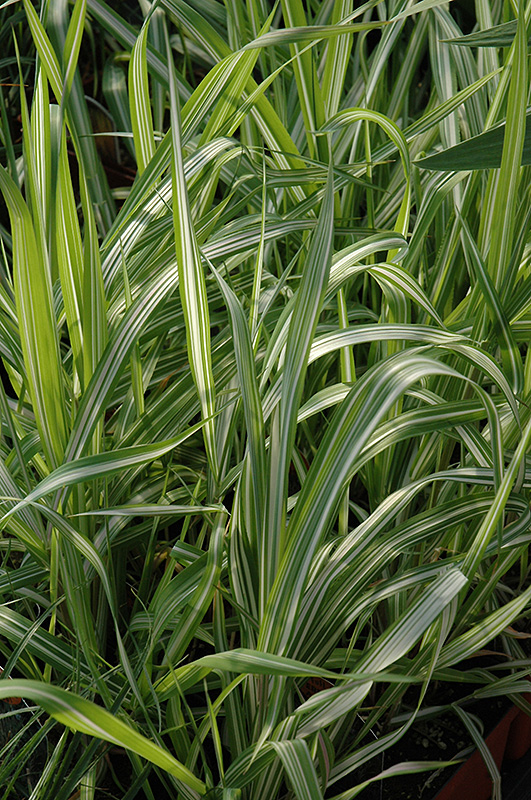Strawberries And Cream Ribbon Grass
Phalaris arundinacea 'Strawberries And Cream'
Height: 3 feet
Spread: 3 feet
Sunlight:
![]()
![]()
Hardiness Zone: 3
Other Names: Canary Grass
Ornamental Features
Strawberries And Cream Ribbon Grass' attractive grassy leaves emerge pink in spring, turning green in color with prominent white stripes and tinges of pink on a plant with an upright spreading habit of growth. The foliage often turns tan in fall.
Landscape Attributes
Strawberries And Cream Ribbon Grass is an herbaceous perennial grass with an upright spreading habit of growth. Its medium texture blends into the garden, but can always be balanced by a couple of finer or coarser plants for an effective composition.
This is a high maintenance plant that will require regular care and upkeep, and can be pruned at anytime. Gardeners should be aware of the following characteristic(s) that may warrant special consideration;
- Invasive
Strawberries And Cream Ribbon Grass is recommended for the following landscape applications;
- Groundcover
- Naturalizing And Woodland Gardens
- Container Planting
Planting & Growing
Strawberries And Cream Ribbon Grass will grow to be about 3 feet tall at maturity, with a spread of 3 feet. It grows at a fast rate, and under ideal conditions can be expected to live for approximately 20 years. As an herbaceous perennial, this plant will usually die back to the crown each winter, and will regrow from the base each spring. Be careful not to disturb the crown in late winter when it may not be readily seen!
This plant does best in full sun to partial shade. It is quite adaptable, prefering to grow in average to wet conditions, and will even tolerate some standing water. It may require supplemental watering during periods of drought or extended heat. It is not particular as to soil type or pH. It is somewhat tolerant of urban pollution. This is a selection of a native North American species. It can be propagated by division; however, as a cultivated variety, be aware that it may be subject to certain restrictions or prohibitions on propagation.
Strawberries And Cream Ribbon Grass is a fine choice for the garden, but it is also a good selection for planting in outdoor pots and containers. With its upright habit of growth, it is best suited for use as a 'thriller' in the 'spiller-thriller-filler' container combination; plant it near the center of the pot, surrounded by smaller plants and those that spill over the edges. It is even sizeable enough that it can be grown alone in a suitable container. Note that when growing plants in outdoor containers and baskets, they may require more frequent waterings than they would in the yard or garden.

